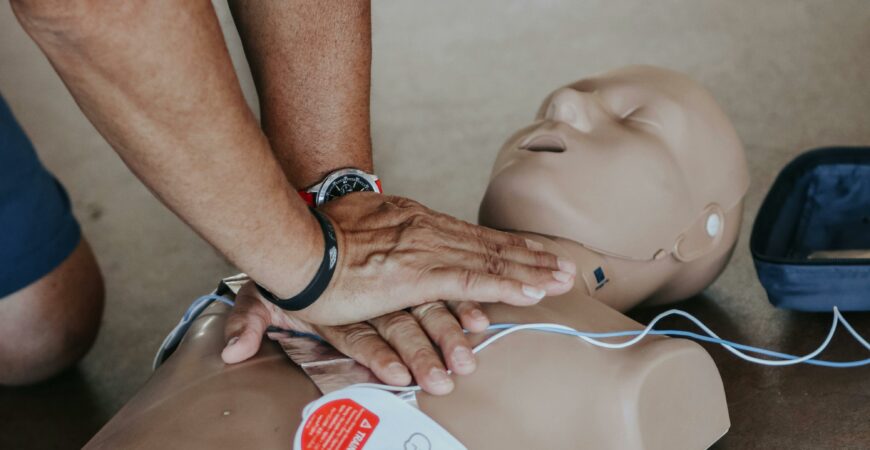Automated External Defibrillators (AEDs) are life-saving devices that are used in the case of cardiac arrest. Time is always of the essence in such emergencies. AEDs work fast and can be used by anyone, regardless of whether they are medical experts. AEDs allow ordinary people like you to save lives.
Understanding AEDs
Defibrillators are extremely reliable when dealing with situations that can lead to death such as ventricular tachycardia, where the heart is beating abnormally fast and therefore does not effectively pump blood.
This condition can deteriorate to ventricular fibrillation, a state where the cardiac muscle experiences electrical impulses in a random, unstable manner. Defibrillators are vital in restoring the normal rhythm of the heart during these critical moments.
An Automated External Defibrillator (AED) works by applying an electric shock to the heart when a person has a sudden cardiac arrest.
This portable device examines the heart rhythm of the patient and gives the user simple instructions for first aid. If a life-threatening irregular rhythm is detected, the AED will instruct you to deliver a shock to restore a normal heartbeat.
This user-friendly process, facilitated by the automated instructions, makes it possible for anybody, even without extensive medical knowledge, to save a life in dire emergency situations.
AEDs in Sports Facilities: The Winning Strategy
The availability of AEDs in sports facilities is a game-winning strategy. In any sports setting, whether on the soccer field or basketball court, having an AED around the corner is the additional level of defense against sudden heart issues.
As per the American Heart Association, over 350,000 people experience cardiac arrest each year outside hospital settings. Unfortunately, the current survival rate is only about 10%. AED leads to notably higher survival rates and thus underlines the importance of having these available in sports facilities.
Guidelines for AED Usage: Ensure the Team’s Safety
- Activate the AED by turning it on.
- Follow the voice prompts; AEDS give clear commands.
- Apply pads correctly- place pads on the location described.
- The device will analyze the heart rhythm and tell you whether a shock is needed.
- If a shock is needed, press the shock button.
When AED shocks are administered or in instances where no shock is required, start immediate CPR, beginning with chest compressions.
Conclusion
The chain of survival in the treatment of sudden cardiac arrest starts with calling for help, then using an AED, and performing CPR, while waiting for professional assistance. Every single step is vital in collectively forming an effective emergency response.
In the end–thanks to their quick instructions–Automated External Defibrillators make heroes out of ordinary people. By promoting the use of AEDs, we all contribute to a world where more lives are saved every single day.

